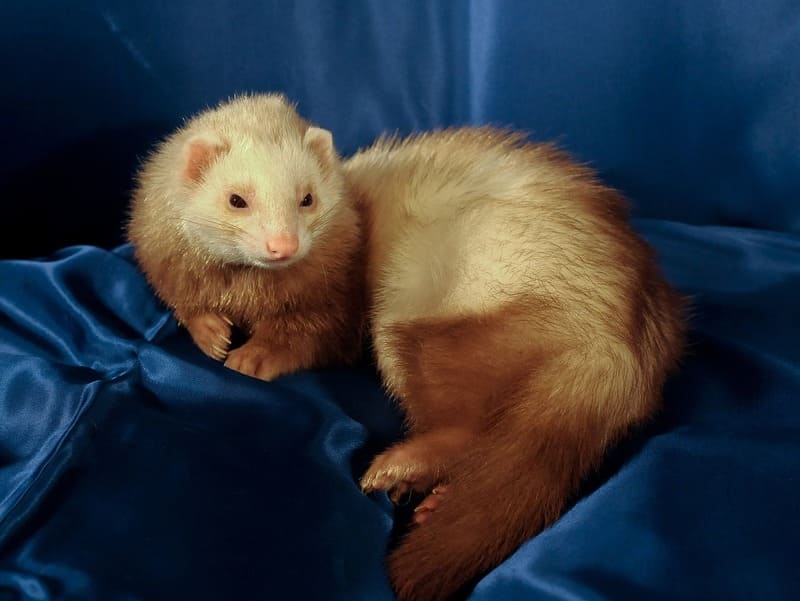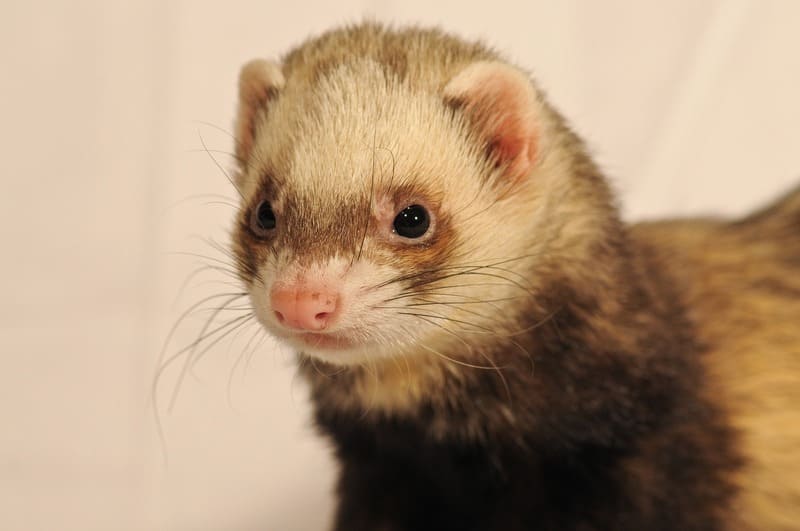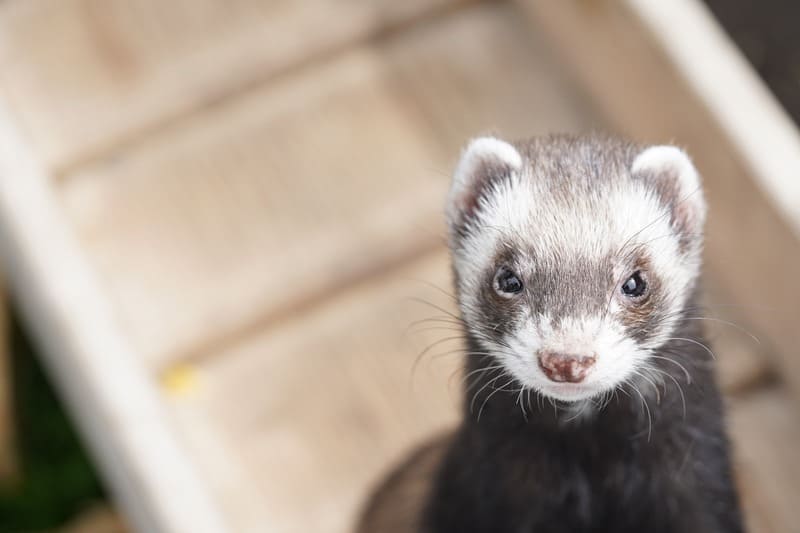Ferrets, those curious and playful little creatures, have won the hearts of pet enthusiasts around the world. However, when it comes to pet ferrets, there is often a lot of curiosity and confusion surrounding their litter habits. Do ferrets use litter boxes? This question is crucial for prospective ferret owners, as it can significantly impact the cleanliness and convenience of keeping these adorable animals as pets.
In this comprehensive guide, we will explore the natural instincts of ferrets, how to train them to use litter boxes, the types of litter boxes and litter to use, and some common litter box problems and solutions. By the end of this article, you’ll have a solid understanding of ferret litter box training and how to maintain a clean living environment for your furry friends.

Understanding Ferret Instincts
Before diving into the specifics of litter box training, it’s essential to understand ferret instincts and behaviors. Ferrets are burrowing animals by nature. In the wild, they create dens and use specific areas for elimination. This instinct to keep their living quarters clean can be harnessed and applied to litter box training.
Instinctual Behavior
Ferrets have a natural inclination to defecate in corners and along walls. This behavior can be beneficial for litter box training since you can place the box in a corner of their enclosure to mimic this instinct.
Territorial Marking
Ferrets are also territorial animals, and they may mark their territory with urine and feces. This marking behavior is more common in unneutered males and unspayed females, so spaying or neutering your ferret can help reduce this issue.
Litter Box Training for Ferrets
Litter box training for ferrets is a relatively straightforward process, but it requires patience, consistency, and a good understanding of your ferret’s behavior. Here are the steps to successfully litter train your ferret:
1. Select the Right Litter Box
Choose a litter box that is appropriately sized for your ferret. Ferrets prefer rectangular or triangular boxes with low sides that they can easily access. Some ferret-specific litter boxes have high backs to prevent splattering. Additionally, consider getting multiple litter boxes if you have more than one ferret or if your ferret’s living space is large.
2. Choose the Right Litter
Select a litter that is safe for ferrets. Avoid clumping cat litters, as ferrets might ingest them, which can be harmful. Ideal options for ferrets include paper pellet, recycled newspaper, or pelleted wood litters. These types of litters are safer if ingested and are generally better at controlling odor.
3. Placement is Key
Position the litter box in a corner of your ferret’s enclosure, as ferrets naturally prefer to defecate in corners. Ensure the litter box is easily accessible to your ferret. If your ferret has an accident outside the box, place the feces in the litter box to help your pet understand its purpose.
4. Supervise and Praise
When you’re litter box training your ferret, it’s essential to supervise their activities, especially when they are out of their cage. If you see your ferret start to eliminate outside the litter box, gently pick it up and place it inside the box. Provide verbal praise or a treat when your ferret uses the box correctly. Positive reinforcement is an effective way to reinforce the desired behavior.
5. Be Consistent
Consistency is key to successful litter training. Maintain a routine by cleaning the litter box daily and replacing soiled bedding in your ferret’s cage. Ferrets are more likely to use the litter box when it’s clean and free from waste.
6. Watch for Signs
Pay attention to your ferret’s behavior, especially when it signals that it needs to eliminate. Common signs include sniffing, circling, or backing up to a corner. When you notice these behaviors, place your ferret in the litter box.
7. Clean Accidents Promptly
If your ferret has an accident outside the litter box, clean it up immediately. Use a pet-safe enzyme cleaner to eliminate odors, as lingering scents may attract your ferret to the same spot for future eliminations.
8. Patience
Be patient during the litter training process. Some ferrets may take longer to learn than others. Consistent reinforcement, a clean environment, and positive reinforcement will help your ferret understand where to go.

Types of Litter Boxes
There are various types of litter boxes available for ferrets, and choosing the right one for your pet’s needs and your living space is essential. Here are some common types of litter boxes for ferrets:
Standard Litter Box
The standard rectangular or triangular litter box is the most common choice for ferret owners. These boxes typically have low sides, making it easy for ferrets to enter and exit. They are available in various sizes to accommodate single or multiple ferrets.
Corner Litter Box
A corner litter box is designed to fit snugly into the corner of your ferret’s enclosure. This design caters to ferrets’ natural behavior of eliminating in corners. It can be an excellent choice for space-efficient living arrangements.
High-Back Litter Box
High-back litter boxes have tall, protective sides to prevent litter and waste from being kicked or splattered outside the box. This type of box is helpful if your ferret has a tendency to dig or play in the litter.
Litter Pans with Grates
Some ferret-specific litter pans come with grates that separate your ferret from the litter. This design can help keep your ferret’s paws clean and reduce tracking of litter outside the box.
Ferret Nation Accessories
If you own a Ferret Nation cage, there are specific accessories available, including litter boxes that attach to the cage for added convenience.
Choosing the Right Litter
Selecting the appropriate litter is crucial for your ferret’s comfort and safety. Here are some types of litter that work well for ferrets:
Pelleted Paper Litter
Pelleted paper litters, made from recycled newspaper, are an excellent choice for ferrets. They are safe if ingested, control odors effectively, and are relatively dust-free.
Pelleted Wood Litter
Pelleted wood litters, often made from compressed sawdust, are another suitable option. They provide good odor control and are safe for ferrets.
Corn Cob Litter
Corn cob litters can be used for ferrets, but some ferrets may try to eat it. Ensure that the corn cob litter is free of any additives or harmful chemicals.
Avoid Clumping Cat Litters
It’s essential to avoid clumping cat litters for ferrets. Ferrets may ingest clumping litters, which can lead to blockages and other health issues. Stick to non-clumping, ferret-safe options.

Common Litter Box Problems and Solutions
Litter box training can sometimes present challenges, but most issues can be resolved with patience and the right approach. Here are some common litter box problems ferret owners may encounter and their solutions:
1. Your Ferret Refuses to Use the Litter Box
Solution: If your ferret refuses to use the litter box, evaluate the box’s cleanliness. Make sure it’s cleaned daily and contains the appropriate type of litter. Additionally, consider the location of the box. If it’s not in a convenient, accessible place, your ferret may avoid it.
2. Your Ferret Keeps Digging in the Litter
Solution: If your ferret enjoys digging in the litter, consider using a high-back litter box to contain the litter better. Alternatively, you can provide a separate digging box filled with clean, safe materials for your ferret to satisfy its digging instinct.
3. Your Ferret Marks Outside the Litter Box
Solution: If your ferret is marking outside the litter box, consider spaying or neutering, which can help reduce this behavior. Ensure that the litter box is kept clean and is positioned in a corner where your ferret naturally prefers to eliminate.
4. Your Ferret Backs Up and Sprays
Solution: If your unspayed female ferret is backing up and spraying urine, spaying can help reduce this behavior. Unneutered males may also display this behavior, which can often be diminished through neutering.
5. Your Ferret Uses a Corner Not Near the Litter Box
Solution: If your ferret chooses a corner other than the one where the litter box is located, consider moving the box to the corner your ferret prefers. This adjustment can help encourage the desired behavior.
6. Your Ferret Eliminates Outside the Litter Box
Solution: If your ferret occasionally eliminates outside the box, clean the area promptly with an enzyme cleaner to remove any lingering odor. Encourage your ferret to use the litter box by placing waste from the accident inside the box to reinforce the intended behavior.

Tips for Successful Litter Box Training
Litter box training your ferret may take time and patience, but these tips can help make the process more successful:
- Use Positive Reinforcement: Praise your ferret and offer treats when it uses the litter box correctly.
- Supervise Outdoor Playtime: When your ferret is out of its enclosure, keep a close eye on it to intervene if it shows signs of needing to eliminate.
- Maintain a Clean Environment: Keep the litter box clean and the surrounding area tidy. Ferrets are more likely to use a clean box.
- Be Patient: Every ferret is different, and some may take longer to learn. Be patient and consistent in your training efforts.
- Spaying and Neutering: Spaying and neutering can help reduce territorial marking and improve litter box training success.
Conclusion
Ferrets can be successfully litter box trained, and with the right approach, you can maintain a clean and odor-free living environment for your pets. Understanding your ferret’s instincts, choosing the right litter and litter box, and using positive reinforcement are key components of successful litter box training.
Remember that patience and consistency are essential when working with your ferret, and you may encounter some challenges along the way. However, with time and effort, you can enjoy the companionship of your playful and curious ferrets without the stress of dealing with litter box accidents.
